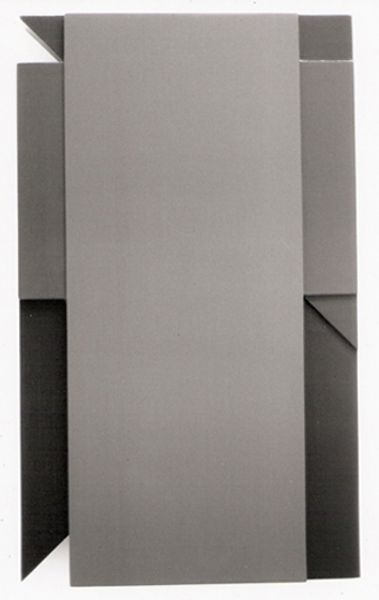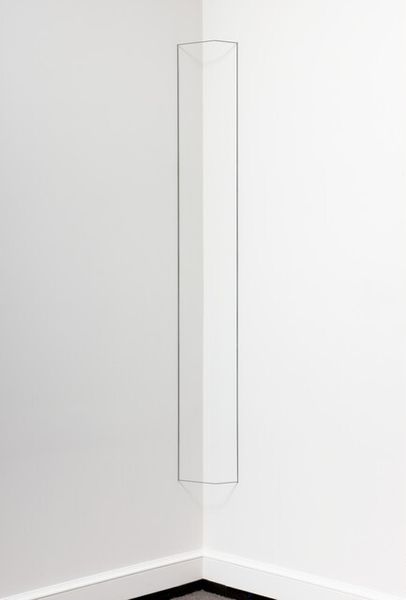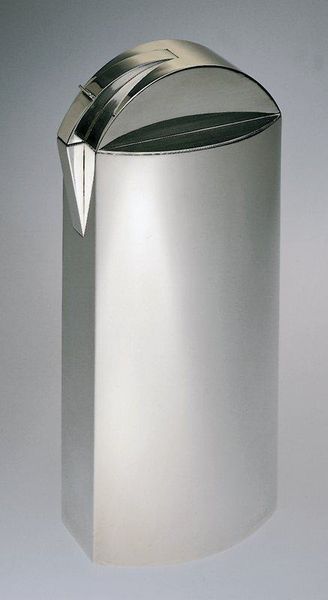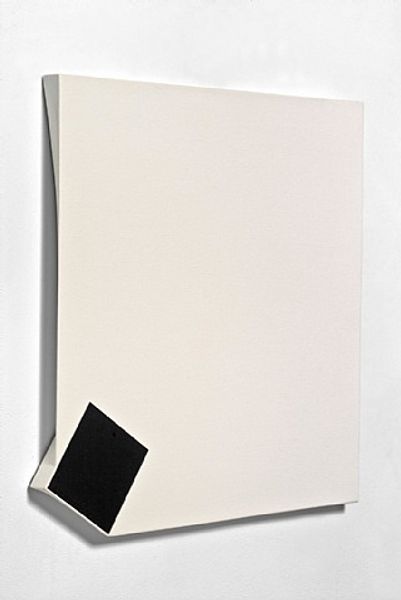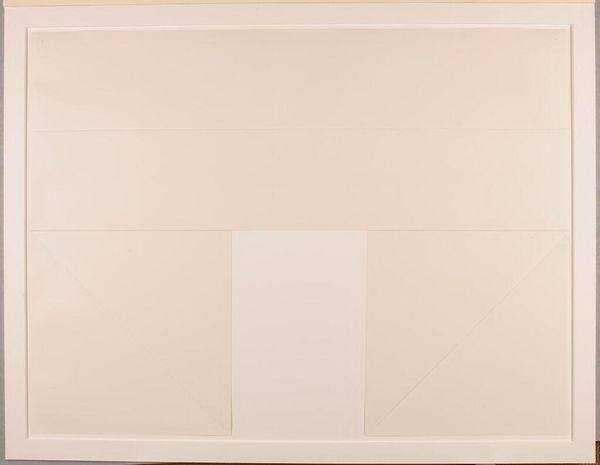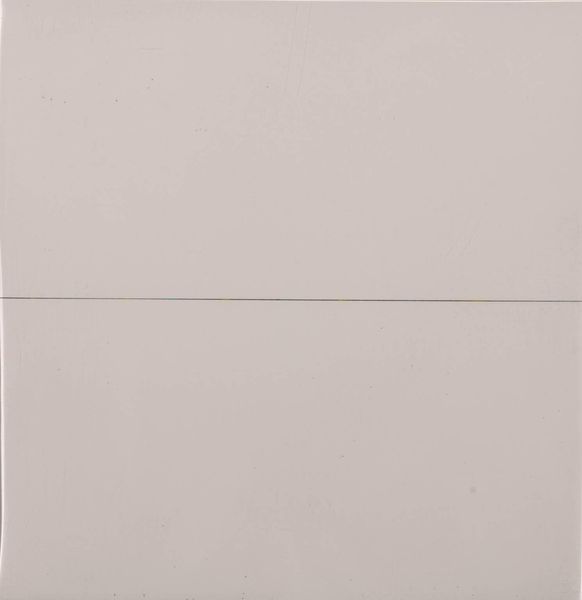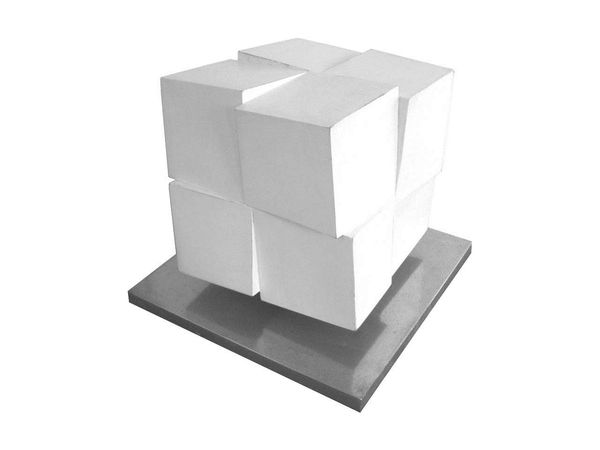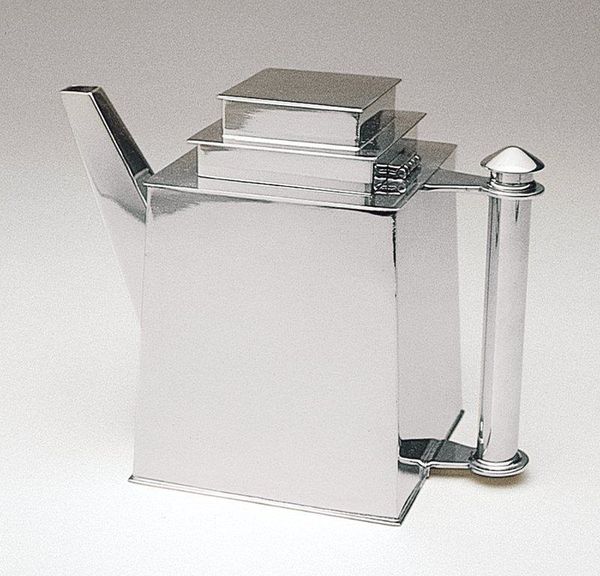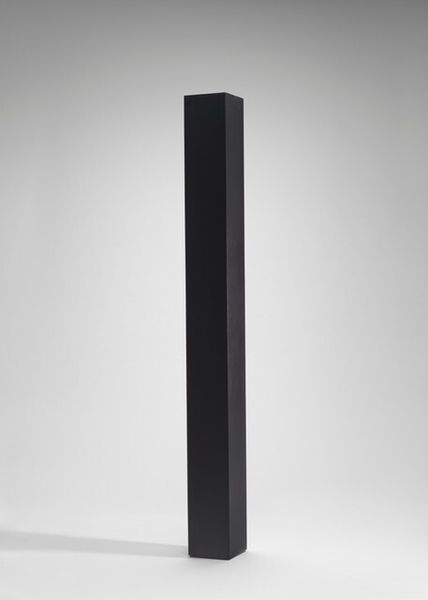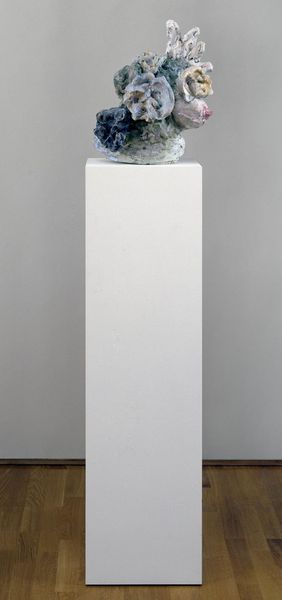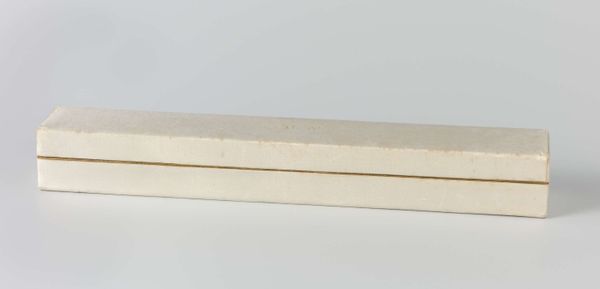
metal, sculpture
#
minimalism
#
metal
#
geometric
#
sculpture
#
abstraction
Copyright: John McCracken,Fair Use
Editor: We’re looking at “10S” by John McCracken, a metallic, geometric sculpture. It’s strikingly simple – a polished triangular prism. It almost feels futuristic and a little cold, maybe? What’s your take on this piece? Curator: McCracken’s work, particularly within the context of Minimalism, acts as a mirror, literally and figuratively. We should be asking ourselves: what narratives are reflected? Minimalism, born in the 1960s, aimed for objective neutrality, but can art truly be devoid of social context? This pristine, manufactured form – what does it say about industrialization, about the values placed on sleekness and perfection, often at the expense of human labor and environmental cost? Editor: That’s interesting. I hadn’t considered the social implications. So you're saying the sculpture’s very lack of obvious narrative is itself a statement? Curator: Precisely. Consider the gendered history of Minimalism. Whose voices were amplified, and whose were suppressed? How did societal expectations shape the movement? This seemingly objective form subtly embodies those power dynamics. And metal is not gender-neutral. How might our view change if this prism were pink felt, or knitted yarn? Editor: So it's less about what it *is* and more about what it *represents* within these societal structures? Curator: Yes, and even what it *excludes.* Where is the human hand? What perspectives are missing? A work like this can instigate critical dialogues about art's role in reflecting and reinforcing social constructs. Don’t you agree? Editor: Absolutely. I guess I came in thinking it was just a pretty shape, but now I see all these layers of meaning that I wouldn't have considered before. Thank you. Curator: And thank you, that initial encounter is exactly where meaningful contemplation begins!
Comments
No comments
Be the first to comment and join the conversation on the ultimate creative platform.
